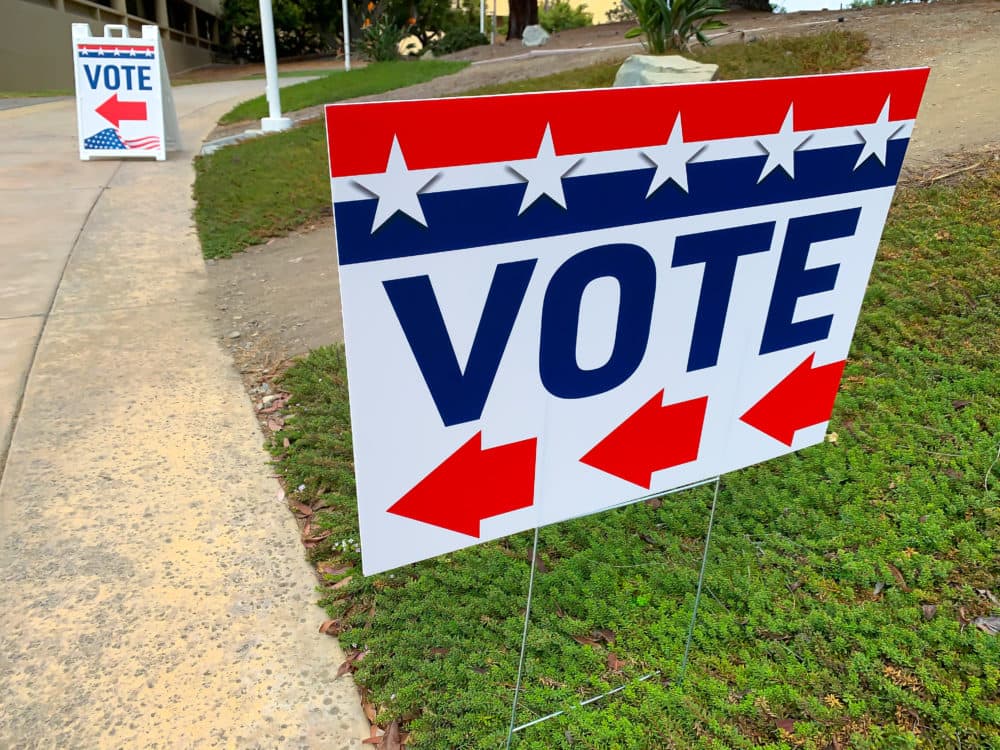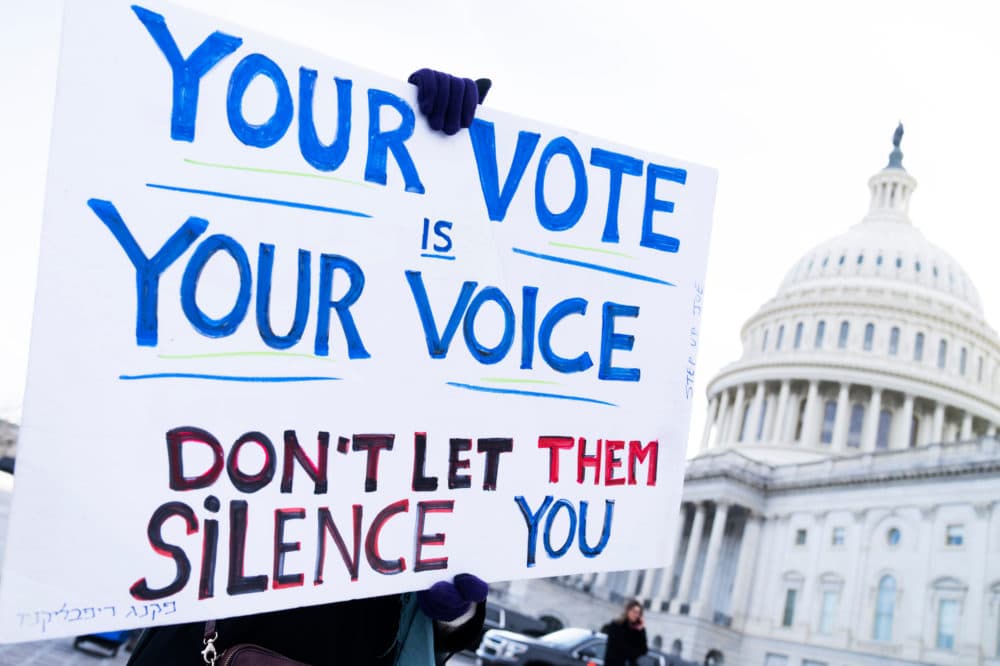Advertisement
Commentary
Despairing over the Senate stalemate won't fix voting rights

The death of the Freedom to Vote Act at the hands of the Senate filibuster rule has been widely interpreted as a loss for Democrats in general and President Joe Biden in particular. It certainly doesn’t burnish Biden’s reputation as a legislative deal-maker. It’s not great for the Democratic Party, either, but it could be worse. And, it leaves open a path for bipartisan election reform even in this polarized environment.
Biden’s inability to move the needle on the Senate filibuster certainly undermines his claim to inside-the-beltway effectiveness, but it’s unclear it was a big blow to Democratic election hopes in 2022 and 2024, for at least two reasons.
First, were it to pass, the Freedom to Vote Act would promptly be subjected to lawsuits that would immediately put a halt to its implementation. These lawsuits would claim that the Act was a federal overreach. In its defense, the Administration would point out that the Constitution allows Congress to “make or alter” state election laws that pertain to the House or Senate.
I find this counterargument compelling, but I doubt an emboldened conservative Supreme Court majority would. At best, litigation in a conservative court system would delay the Act’s implementation for months, if not years. At worse, it would allow the Supreme Court to continue down its well-trodden path of narrowing voting rights.
... it’s easy to paint the filibuster as the enemy of election access. But, if we cast our sights even a little bit further down the road, we can see the day when the filibuster could protect against extreme efforts to limit participation.
Second, although the Freedom to Vote Act addresses serious barriers to voting, it’s unclear that those barriers are insurmountable for Democratic victories in coming elections. Democrats have certainly succeeded when the barriers have been higher.
When academic research has sought to quantify the practical effects that barriers, such as strict ID requirements, or liberalizations, such as automatic voter registration, have had on turnout or election outcomes, they fail to find consistent results one way or the other. The one notable exception is Election Day registration.
In fairness, a big reason that barriers thrown up against voting fail to consistently suppress turnout or skew the electorate is that campaigns and parties adapt to them, redoubling their efforts at outreach and mobilization. These barriers may be erected out of spite, fear, or an effort to tilt the playing field, but the scientific literature has yet to show that they are insurmountable.
Advertisement
The outcomes of the 2022 and 2024 elections will not ride on the barriers currently being erected or lowered by state legislatures. They will likely be determined by the fundamentals of election campaigns, such as the popularity of the incumbents, the state of the economy, and the ability of the opposition to nominate compelling challengers.

The Freedom to Vote Act failed because of the filibuster. Because political time horizons are so short, it’s easy to paint the filibuster as the enemy of election access. But, if we cast our sights even a little bit further down the road, we can see the day when the filibuster could protect against extreme efforts to limit participation.
Consider this scenario. Biden is defeated in 2024 and both the House and Senate are controlled by Republicans. President Ron DeSantis holds a press conference in which he, Speaker Marjorie Taylor Greene, and Senate Majority Leader Tom Cotton reveal their version of H.R. 1, the Make Elections Secure Again Act. What do we think would be in that bill?
Here’s my list: eliminate no-excuse absentee voting, restrict early voting, outlaw dropboxes, mandate strict photo ID laws and citizenship background checks for voters, purge voters who fail to vote, criminalize innocent mistakes by election officials, grant state legislature the right to replace presidential electors for flimsy reasons, prohibit independent redistricting commissions and retroactively declare districts drawn by those commissions invalid, end all federal campaign finance regulation, and repeal Section 2 of the Voting Rights Act.
Such a draconian law would certainly be challenged in court. It would get ensnared in the same legal trap I suspect the Freedom to Vote Act would have gotten caught up in. It, too, would be challenged as a federal overreach. Who knows how a staunchly conservative Supreme Court would rule in this case?
Creating a filibuster carveout for voting rights would prime future retaliation by Republicans when they returned to power. Of course, Republicans have proven more willing to play constitutional and parliamentary hardball in the past, and it’s possible they would do so in the future, by carving out an exception for “election integrity,” even in the absence of Democrats doing the same thing for voting rights. Still, the fact that the Democrats failed to create a voting rights carveout for the filibuster this time makes it harder for Republicans to do it in the future.
We are likely to see competing partisan election wish lists proposed and debated for years to come, depending on who is in power. The presence of the filibuster without an elections carveout virtually guarantees legislative stalemate on the federal election law front. This prompts parallel paths moving forward.
For one thing, the present skirmishing over election access will continue in the states. Bills to both expand and contract voting opportunities will continue to be introduced at historically high rates. If current trends continue, those bills will be introduced, but won’t often pass — at least not in their most extreme versions — in most states.
And secondly, in this scenario, bipartisan election reform actually becomes a possibility. Although not as sexy as the highly partisan proposals, there are possibilities on the table that would make vote subversion less likely and improve security and access in voting.
Yet while we live with voting rights stalemate, we shouldn’t lose track of bipartisan reform opportunities that are staring us in the face.
To decrease the likelihood of subversion, the Electoral Count Act can be updated to make clear that state legislatures can’t overturn the results of a presidential election on a pretext and that the counting of electoral votes on January 6 is a proforma ceremony. There continue to be indications that such a reform is possible.
In addition, there is a long list of middle-level changes that would nonetheless improve elections in many ways and bring needed resources to beleaguered election administrators. One such proposal was released in a report by a group representing a bipartisan collection of Washington think tanks. It contains reforms such as increased funding for elections, required ballot tracking, and automatic voter registration.
Current efforts in the states to limit opportunities to vote are not based on evidence that elections have suddenly sunk to banana republic quality. Gratuitous efforts to advantage one party over the other should be resisted. It’s clear that the Freedom to Vote Act will not be the vehicle for resisting these bills. By being brought down by the filibuster rule, we may be avoiding even more extreme reactionary bills in the future. Yet while we live with voting rights stalemate, we shouldn’t lose track of bipartisan reform opportunities that are staring us in the face.
